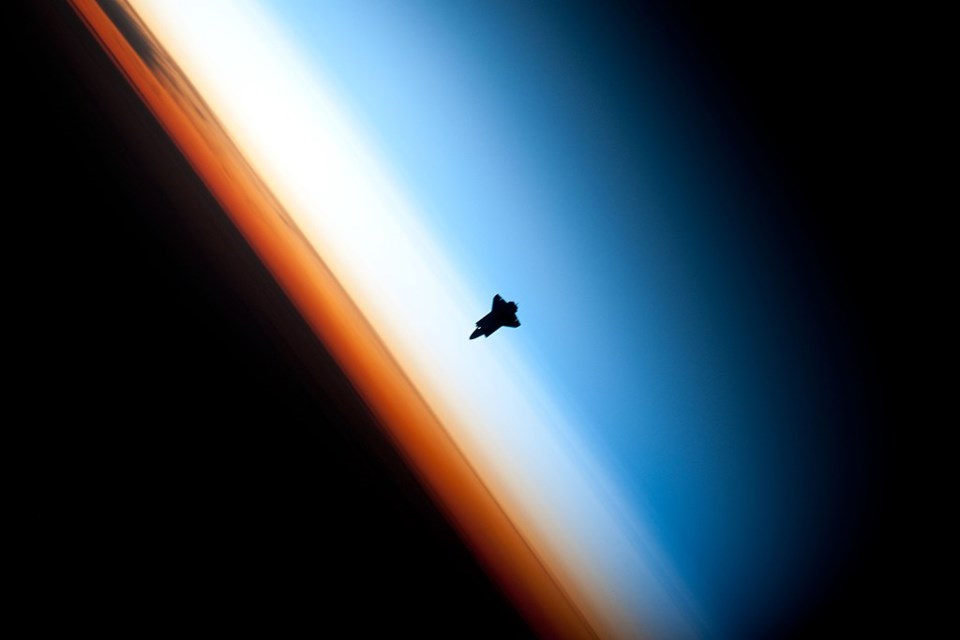We have officially made it into summer, as of 2:43 p.m. Sechelt time, June 20. Great to have all this sunshine and warm gentle breezes! Wait, what? Anyway, June would have been well described as “close-but-no-cigar” astronomically for us here on the Sunshine Coast. For July, we have some pretty planetary action; nothing spectacular, but pretty. Jupiter and Saturn rise around 11 p.m., Mars around 1 a.m. and Venus just before sunrise – say 4 a.m. Mercury will be too close to the Sun for safe observing until late July but we may then be able to see five out of five of the naked-eye planets in the hours before sunrise. By month end, Venus and Mars will be quite bright with Mars brightening week by week as we close on it.
While we missed every one of June’s events, others were more fortunate. Photos of the barely-penumbral lunar eclipse of June 5 can be seen at: www.space.com/strawberry-moon-lunar-eclipse-2020-photos.html. Nice, but not much “wow” factor.
The June 20 occultation of Venus by the moon certainly was spectacular. One very cool website is apod.nasa.gov/apod/. The Astronomy Picture of the Day site (APOD) is a daily gallery of astrophotos of all types and one of the best photo sources on the Internet. The June 21 photo is a beautiful time-lapse composite of the crescent moon approaching a brilliant crescent Venus. Big-time “wow” factor. This kind of close approach photo is definitely on my bucket list.
See www.space.com/ring-of-fire-solar-eclipse-2020-thrils-skywatchers.html for some very neat photos of late June’s annular eclipse that was visible in Asia and Africa.
Another neat website is www.spaceweather.com/. While the site is mainly devoted to the sun and interplanetary space effects, the June 23 page has an article on this month’s topic: Noctilucent Clouds. Also check out the APOD picture for June 19 on the same subject.
Noctilucent clouds are actual clouds but with a big difference. While most clouds in our atmosphere are confined to the troposphere – up to 10 to 15 km above the Earth – noctilucent clouds exist at 70 to 90 km altitude, as much as five times higher. That part of the atmosphere is known as the mesosphere, where pressures are less than 1/1000th of sea level and temperatures can be -90 C.
It is a poorly understood part of the atmosphere – too high to reach with aircraft or balloons and too low for orbital spacecraft. The current theory is that small amounts of water vapour, which is lighter than air, drift up through the stratosphere and into the mesosphere. The extreme cold makes these water molecules want to condense but the air is so thin as to make this difficult. However, the mesosphere is also where most meteors disintegrate into dust and this floats around up there for years, offering potential nuclei for ice condensation. The result appears as wispy patterns of faint cirrus-like clouds that shine in the northern sky after sunset like billions of little meteoric “dustsicles,” to coin a phrase.
This time of the year is best for viewing these clouds and this year particularly because of low mesospheric temperatures. I’ve seen them repeatedly over the last 35 years or so, especially when I lived in Whitehorse and also from Calgary. I could watch these in the north all night long around the summer solstice several times a week and they can be visible at times down to the northern United States. It’s worth a good look to the north when skies are clear after sunset. Once you’ve seen them, you’ll be hooked.
All of the movements of moon and planets described can be checked out on the web at www.heavens-above.com
The next regular meeting of the Astronomy Club will be on July 10 at 7 p.m. using Zoom. Information on the speaker and topic and how to register will be on the club website at sunshinecoastastronomy.wordpress.com/ the week of the meeting.
– Richard Corbet, SC Astronomy Club



